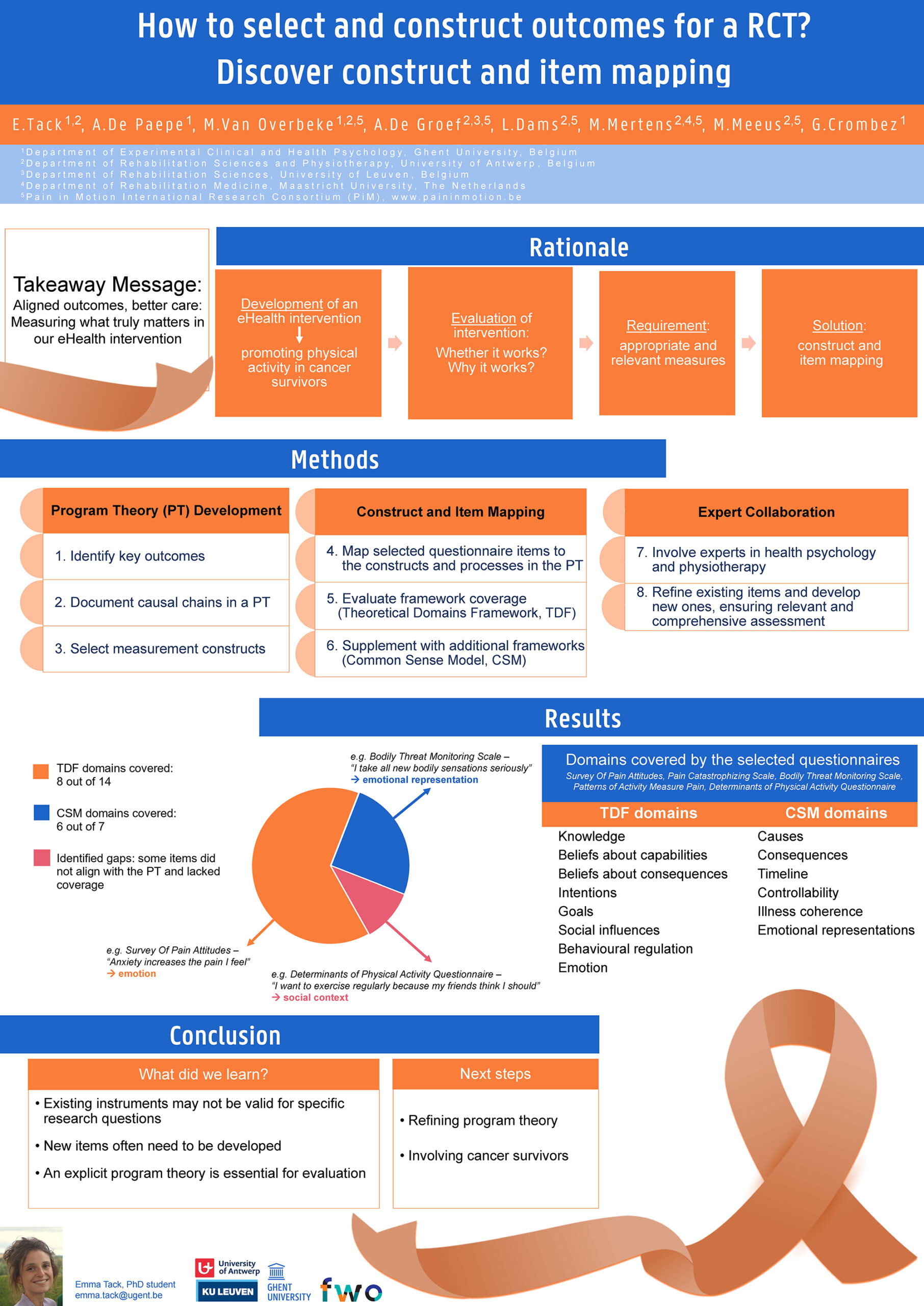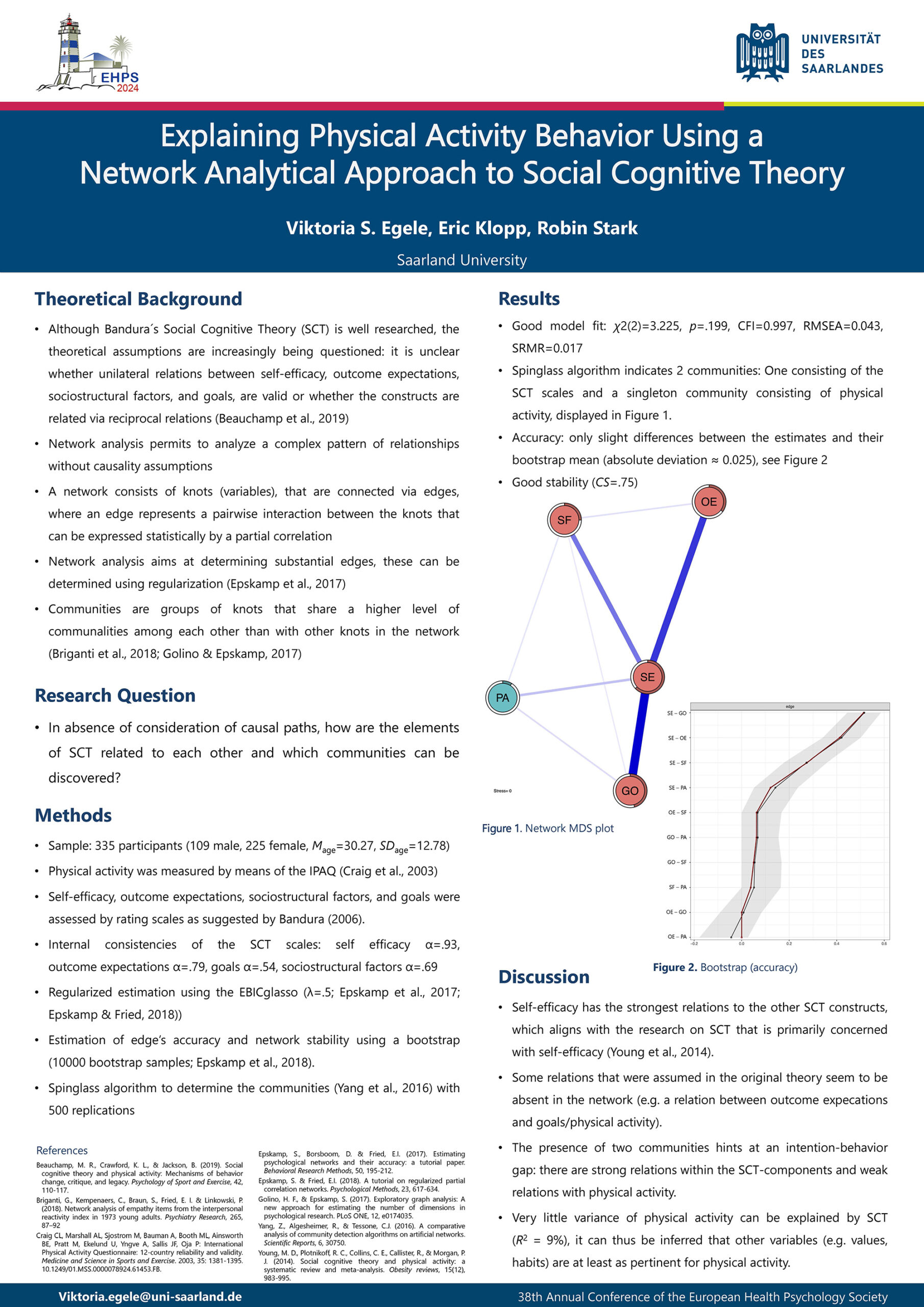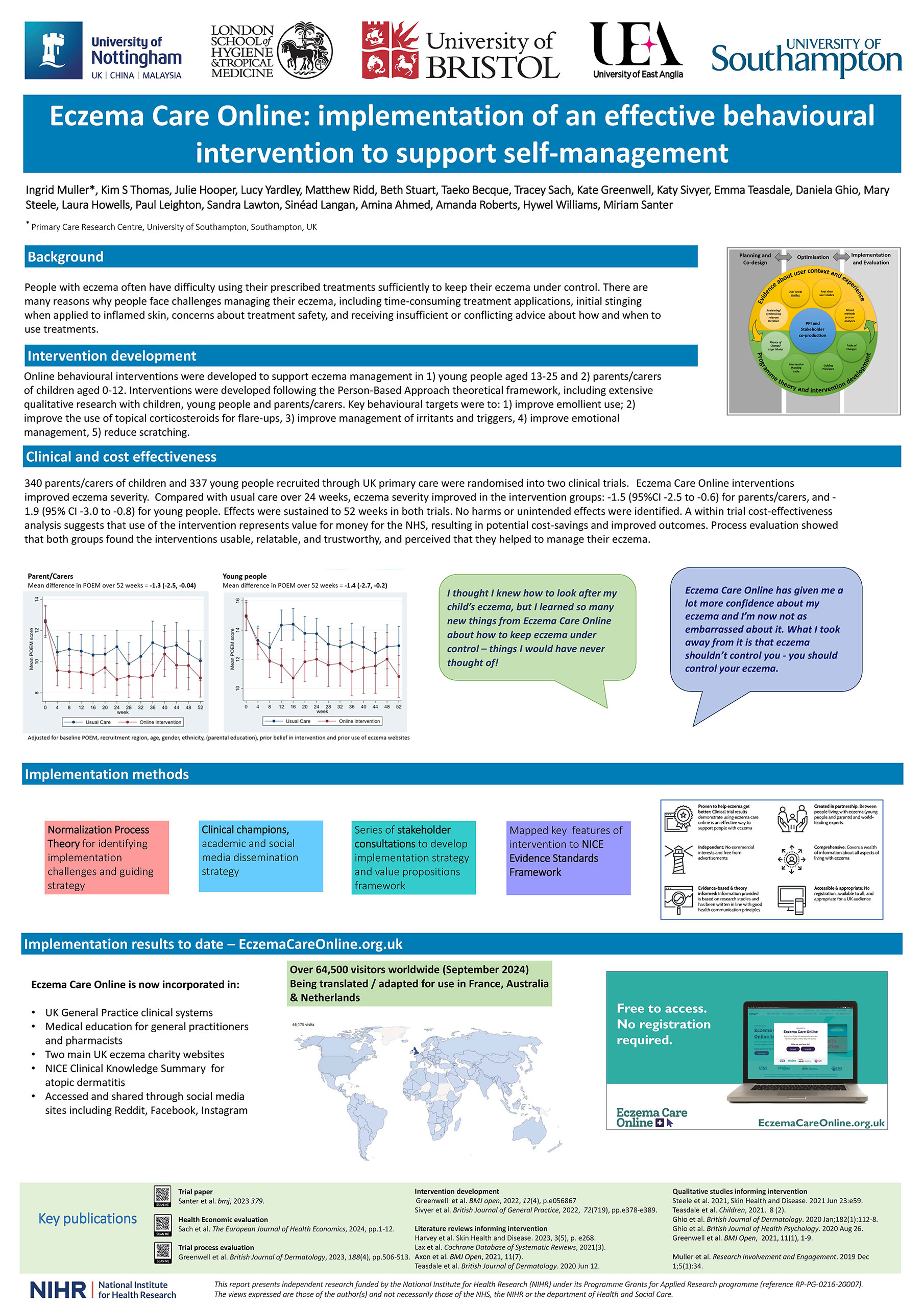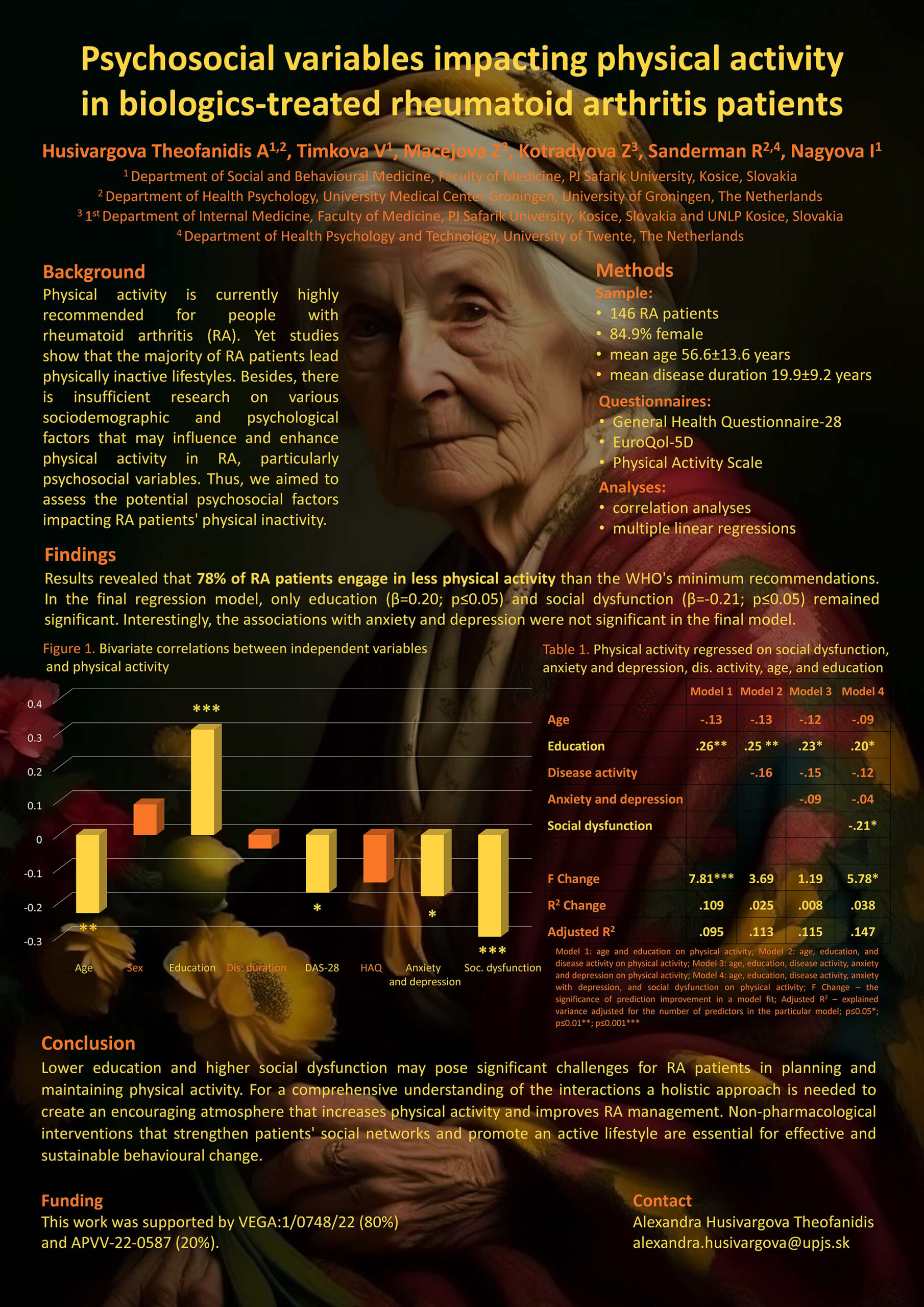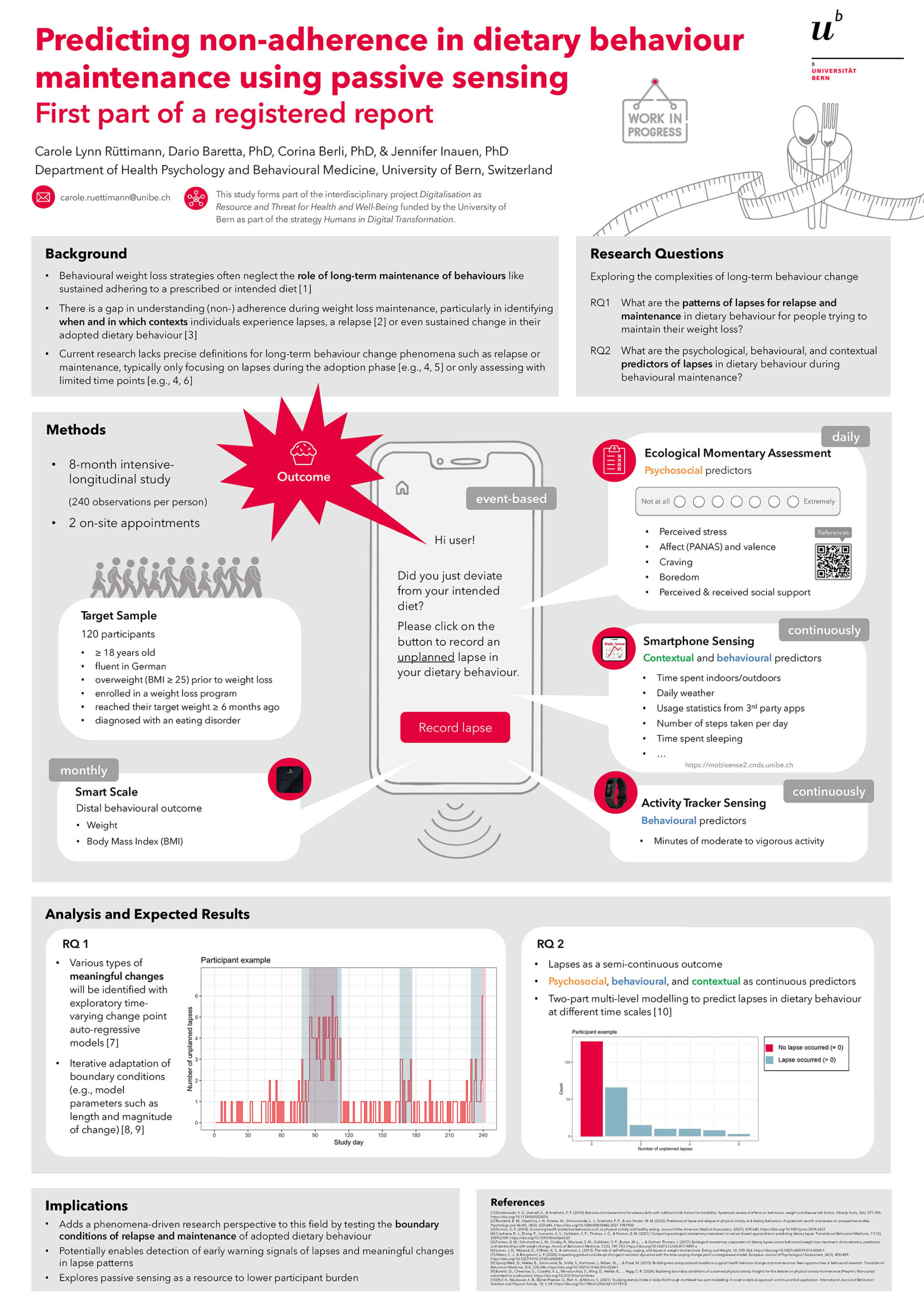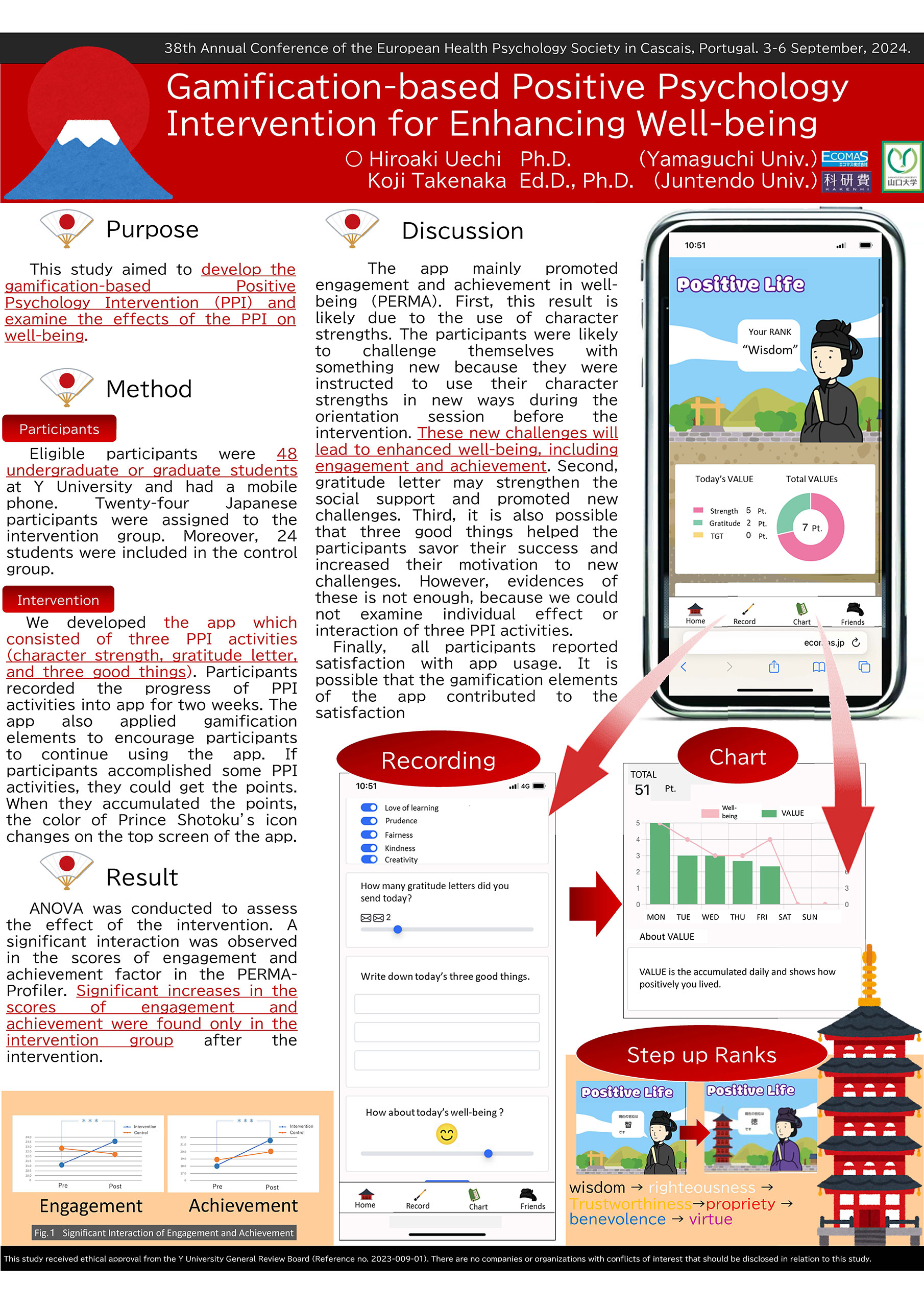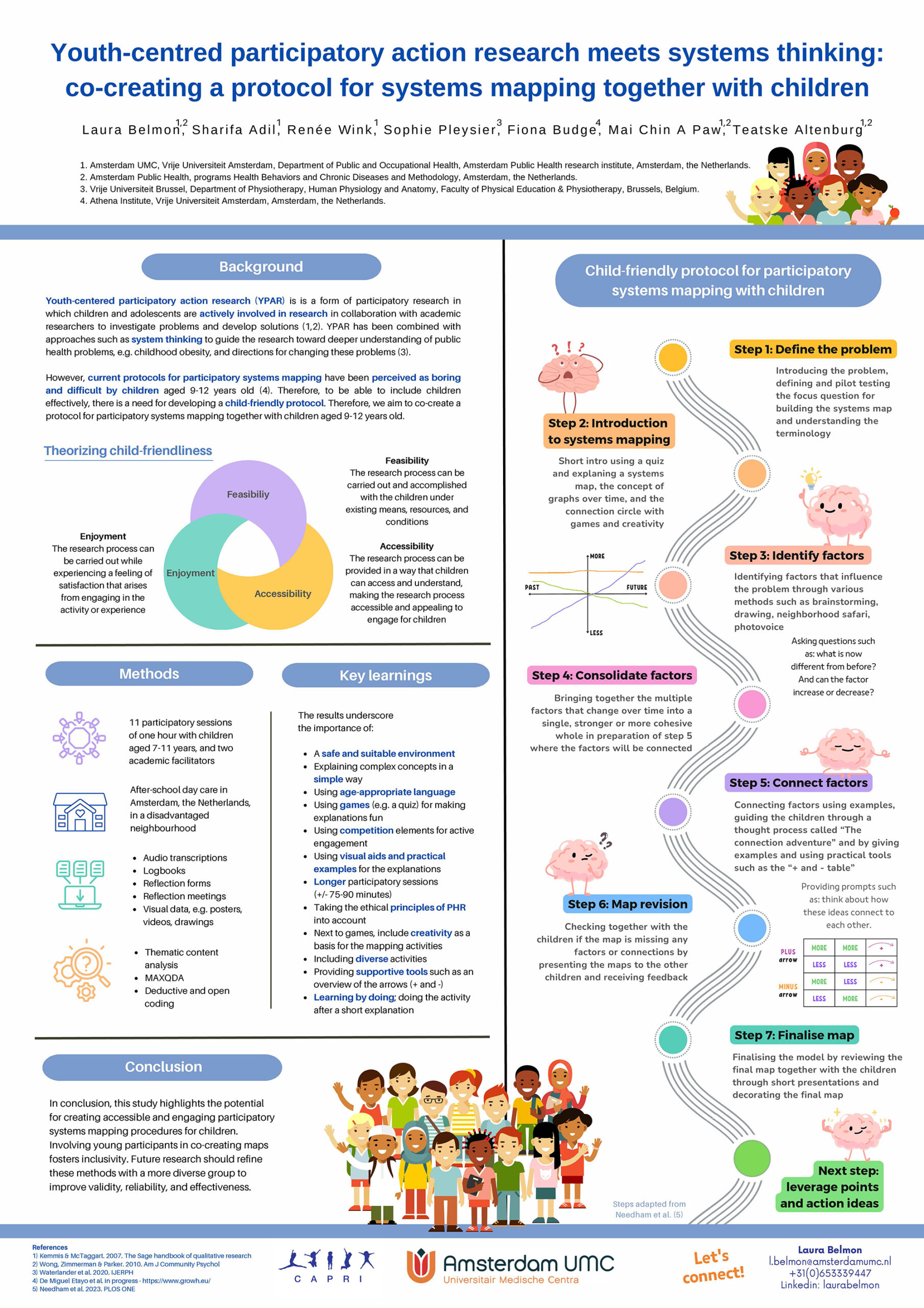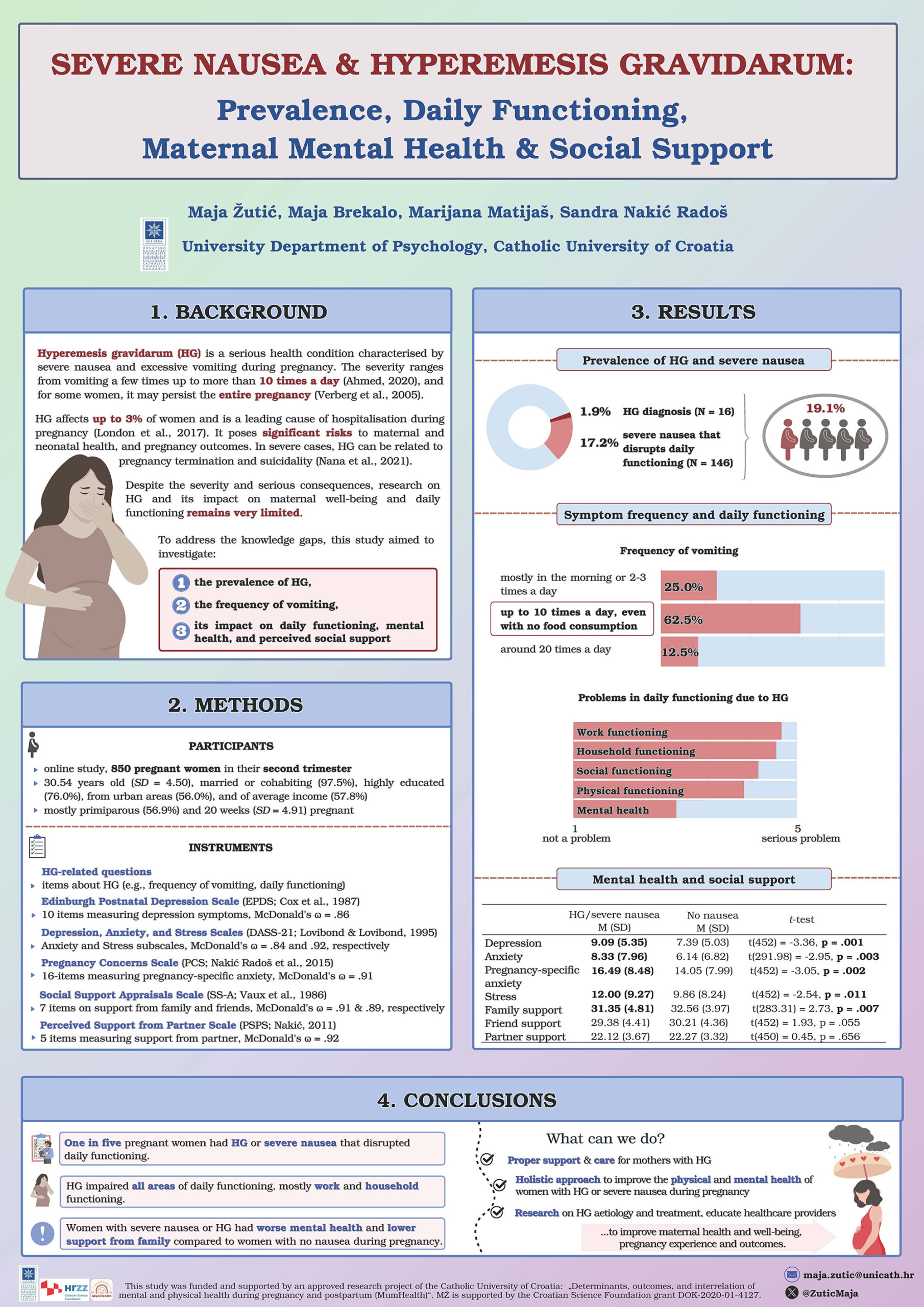Poster Awards
EHPS 2024 Poster Award Winners
Eight posters have been selected for the award of EHPS 2024 Poster Prize winners. These posters were selected by a panel of six judges who were drawn from the EHPS 2024 Scientific Committee
Wednesday Poster Session
Selecting and constructing outcomes for a RCT: construct and item mapping
Emma Tack2 , Lore Dams1, Geert Crombez2, Mira Meeus1, Annick De Paepe2, Michel Mertens1, Marthe Van Overbeke2, An De Groef1
1Antwerp University, Belgium;
2Ghent University, Belgium
Explaining physical activity behaviour using a network analytical approach to social cognitive theory
Viktoria Egele1, Eric Klopp1, Robin Stark1
1Saarland University, Germany
Eczema care online: implementing of an effective behavioral intervention to support self-management
Ingrid Muller1
1University of Southampton, United Kingdom
Background: Eczema Care Online is a web-based behavioural intervention developed using theory-, evidence- and person-based approaches to support people with eczema and parents of children with eczema. The website (www.EczemaCareOnline.org.uk ) has been shown in two large RCTs to improve eczema symptoms. Compared with usual care over 24 weeks, eczema severity significantly improved in the intervention groups and this effect was sustained up to 52 weeks.
We sought to understand the implementation pathway for Eczema Care Online and evaluate its impact on costs and outcomes for healthcare providers.
Methods: We mapped the key features of Eczema Care Online to the NICE Evidence Standards Framework using mixed methods to define key features of the website and evaluate the views of key stakeholders. Health economic data was collected through an in-trial evaluation using medical notes review to collect health resource use data.
Results: Key features of the website that were valued by stakeholders were that it is: evidence informed, created in partnership, comprehensive, independent, accessible and proven to improve eczema. The website meets the NICE Evidence Standards for adoption of digital interventions into the UK National Health Service. The intervention was shown to be low cost and highly cost-effective compared to usual care (being lower cost and more effective in most scenarios).
Conclusion: Eczema Care Online is clinically and cost-effective and is being adopted in a variety of healthcare settings across the UK and internationally. We reflect on the different routes to implementation and integrating the behavioural intervention into clinical care pathways.
Thursday Poster Session
Psychosocial variables impacting physical activity in biologics-treated rheumatoid arthritis patients
Alexandra Husivargova Theofanidis1, 2, Vladimira Timkova1, Zelmira Macejova3, Zuzana Kotradyova3, Robbert Sanderman2, 4, Iveta Nagyova1
1Department of Social and Behavioural Medicine, Faculty of Medicine, PJ Safarik University in Kosice, Slovakia;
2Department of Health Psychology, University Medical Center Groningen, University of Groningen, Netherlands;
31st Department of Internal Medicine, Faculty of Medicine, PJ Safarik University in Kosice, Slovakia;
4Department of Psychology Health and Technology, University of Twente, Enschede, Netherlands
Background: Physical activity is currently highly recommended for people with rheumatoid arthritis (RA). Yet studies show that the majority of patients lead physically inactive lifestyles. Besides, there is insufficient research on various sociodemographic and psychological factors that may enhance physical activity in RA, particularly psychosocial variables. Thus, we aimed to assess the potential psychosocial factors impacting RA patients’ physical inactivity.
Methods: Our study involved 146 RA patients (84.9% female; mean age 56.6±13.6 years; mean disease duration 19.6±9.2 years). All patients completed the General Health Questionnaire-28, EuroQol-5D, and the Physical Activity Scale. Correlation analyses and multiple linear regression were used to analyze the data.
Predicting non-adherence in dietary behaviour maintenance using passive sensing: First part of a registered report
Carole Lynn Rüttimann1, Dario Baretta1, Corina Berli1, Jennifer Inauen1
1University of Bern, Switzerland
Gamification-based positive psychology intervention for enhancing well-being
Hiroaki Uechi1, Koji Takenaka2
1Yamaguchi University, Japan, 2Juntendo University, Japan
Background: This study aimed to develop the gamification-based Positive Psychology Intervention (PPI) and examine the effects of the PPI on well-being.
Methods: Eligible participants were undergraduate or graduate students at Y University and had a mobile phone. Twenty-four Japanese participants were assigned to the intervention group. Moreover, 24 students were included in the control group. We developed the app which consisted of three PPI activities (character strength, gratitude letter, and three good things) for two weeks. Participants recorded the progress of PPI activities into app. The app also applied gamification elements to encourage participants to continue using the app. If participants accomplished some PPI activities, they could get the points. When they accumulated the points, the color of Prince Shotoku’s icon changes on the top screen of the app.
Expected results: ANOVA was conducted to assess the effect of the intervention. A significant interaction was observed in the scores of engagement and achievement factor in the PERMA-Profiler. Significant increases in the scores of engagement and achievement were found only in the intervention group after the intervention.
Discussion: The app mainly promoted engagement and achievement in well-being (PERMA). This result is likely due to the use of character strengths. The participants were likely to challenge themselves with something new because they were instructed to use their character strengths in new ways during the orientation session before the intervention.
Friday Poster Session
Youth-centred participatory action research meets systems thinking: co-creating a systems map together with children
Laura Belmon1, 2, Teatske Altenburg1, 2, Mai Chin A Paw1, 2
1Public and Occupational Health, Amsterdam UMC location Vrije Universiteit Amsterdam, Netherlands;
2Amsterdam Public Health, programs ‘Health Behaviors and Chronic Diseases and Methodology’ and ‘Methodology’, Amsterdam, Netherlands
Severe nausea and hyperemesis gravidarum: prevalence, daily functioning, maternal mental health, and social support
Maja Žutić1, Maja Brekalo1, Marijana Matijaš1, Sandra Nakić Radoš1
1Catholic University of Croatia, Croatia

